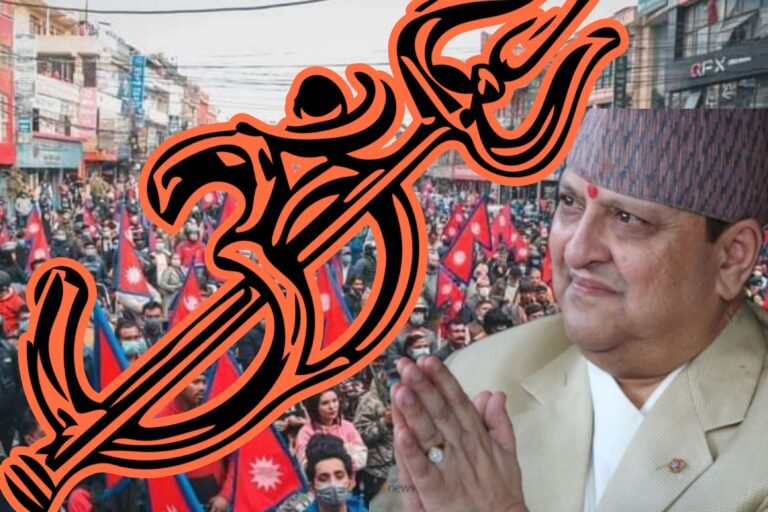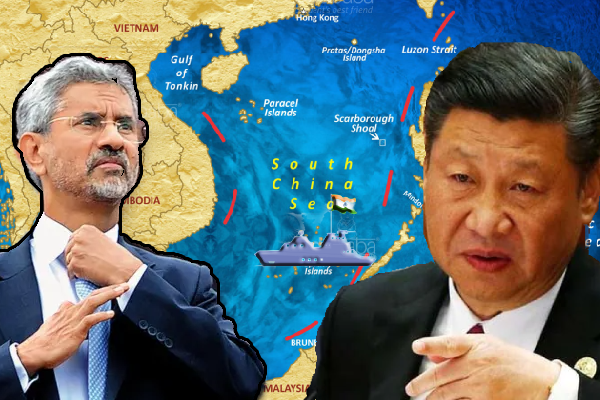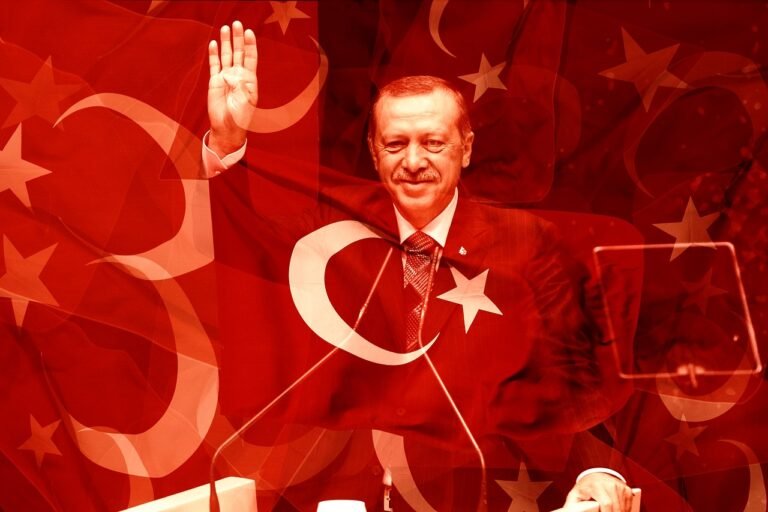Iran has been in the news for a long time now for its conflict with Israel and open support for Hamas. We all knew about Iran’s nexus with proxies in the region and how Iran uses these proxies as pawns to accomplish its geopolitical interests. Recently, Iran has also vowed to change its Nuclear doctrine, but it has not mentioned what kind of change it wants to bring in their nuclear doctrine if it wants to pursue nuclear weapons then it will have a significant impact on the region’s geopolitics.
Many geopolitical analysts have seen Iran as a trouble-creator in the Middle East, but Iran was never the type of country as it is today, in contrast, it used to enjoy good relations with Western countries, it was a liberal society, also it accepted the modernisation approach and a secular country.
Then you might naturally ask, what prompted Iran to sever its ties with Western countries and become a troublemaker in the region? The answer to this question lies in the Iranian Revolution of 1979. In this blog, we will explore the complete history of the Iranian Revolution of 1979 and its impact on the region and society.
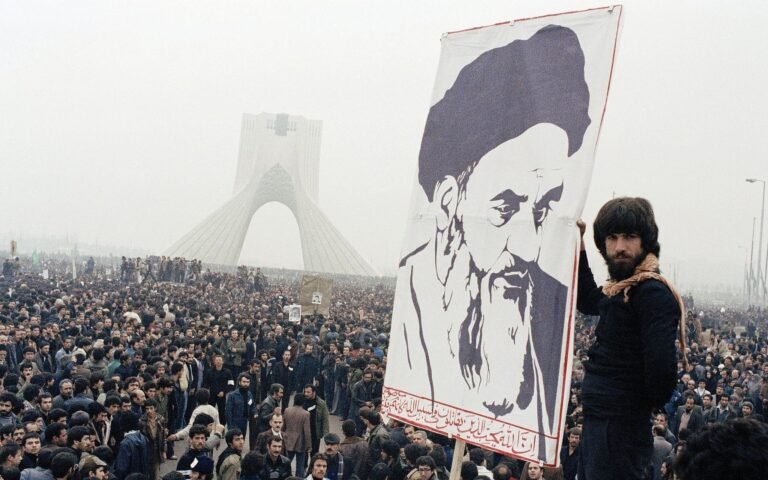
Events leading to Iranian revolution
The 20th century witnessed profound transformations in Iran’s political and social landscape. The collapse of the Qajar dynasty in the early 20th century paved the way for the rise of the Pahlavi dynasty under Reza Shah, who sought to modernize Iran through rapid industrialization and secularization. Reza Shah’s reign laid the groundwork for his son, Mohammad Reza Shah Pahlavi, whose rule would be marked by a tumultuous interplay of modernization efforts, authoritarianism, and Western influence.
The decades preceding the Iranian Revolution were characterized by a blend of economic development and political repression under the Shah’s regime. While Iran experienced rapid modernization and economic growth, driven largely by oil revenues, these gains were accompanied by widespread social inequality, political repression, and human rights abuses. The growing discontent among various segments of society, coupled with the Shah’s close alignment with Western powers, particularly the United States, set the stage for the revolutionary upheaval that would convulse Iran in 1979.
The Iranian Revolution did not emerge in a vacuum but was rather the culmination of decades of social, economic, and political grievances. The White Revolution of the 1960s and 1970s, initiated by the Shah, aimed to modernize Iran’s economy and society through a series of sweeping reforms. However, these reforms, which included land redistribution, literacy campaigns, and women’s rights initiatives, often exacerbated social tensions and alienated traditional power structures.
The Shah’s authoritarian rule and repressive tactics, including the widespread use of secret police and torture, fueled opposition movements across the political spectrum. From secular nationalists to Islamist clerics to leftist guerrillas, disparate factions coalesced around a shared desire to challenge the Shah’s regime and its perceived subservience to Western powers.
The catalyst for the Iranian Revolution came in 1978 with the eruption of mass protests and demonstrations against the Shah’s rule. Sparked initially by grievances over economic inequality, political repression, and corruption, the protests quickly snowballed into a nationwide uprising, fueled by a potent blend of revolutionary fervor and religious zeal. The pivotal moment came with the mobilization of Ayatollah Ruhollah Khomeini, who emerged as the charismatic leader of the revolution and galvanized popular support for the overthrow of the monarchy.
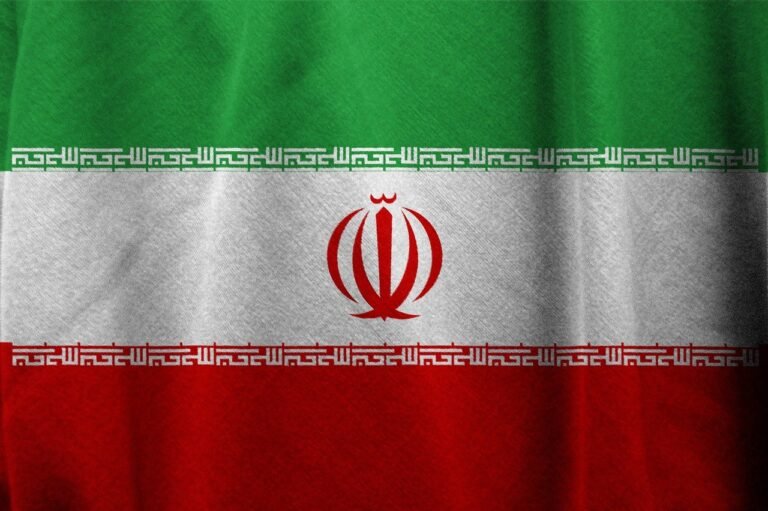
Ideological change
At the heart of the Iranian Revolution was a profound ideological transformation, driven by a fervent commitment to Islamism and opposition to Western imperialism. Ayatollah Khomeini’s vision of an Islamic state, rooted in Shia principles and revolutionary zeal, resonated deeply with millions of Iranians disillusioned with the Shah’s secular authoritarianism and perceived subservience to foreign powers.
Khomeini’s revolutionary ideology offered a potent alternative to the Pahlavi regime’s secular nationalism, drawing upon centuries of Shiite tradition and resistance to tyranny. His uncompromising stance against the Shah’s regime and its Western backers struck a chord with Iranians across the social and political spectrum, uniting disparate factions under the banner of Islamic revolution.
The Iranian Revolution represented a rejection of Westernization and a reaffirmation of Iran’s Islamic identity, as articulated through the concept of velayat-e faqih, or guardianship of the Islamic jurist. This principle, enshrined in Iran’s post-revolutionary constitution, vested ultimate authority in the Supreme Leader, a position held by Khomeini until his death in 1989. The establishment of the Islamic Republic of Iran signaled a seismic shift in Iran’s political and ideological landscape, setting the stage for a new era of Islamic governance and resistance to Western hegemony.
Geopolitical Shifts After the Revolution
The Iranian Revolution of 1979 reverberated across the Middle East, triggering seismic shifts in the region’s geopolitical dynamics. Iran, under the leadership of Ayatollah Khomeini, emerged as a standard-bearer of revolutionary Islamism, challenging the dominance of Western powers and the traditional order of the region. The establishment of the Islamic Republic marked a decisive break from Iran’s previous alignment with the West, as the new regime pursued an independent and assertive foreign policy based on revolutionary principles.
Iran’s newfound revolutionary zeal posed a direct challenge to the regional influence of the United States and its allies, particularly Israel and Saudi Arabia. The Islamic Republic’s support for anti-Western movements and militant groups, including Hezbollah in Lebanon and various Shiite militias in Iraq, fueled tensions and proxy conflicts across the Middle East. Iran’s backing of these groups served as a means of projecting its influence and countering perceived adversaries, while also advancing its strategic interests in the region.
The Iranian Revolution also precipitated a realignment of alliances and power dynamics in the Middle East. Iran’s support for militant groups and opposition to Israel and Western powers brought it closer to other anti-Western actors in the region, such as Syria under the Assad regime. This convergence of interests created a new axis of resistance against Western hegemony, challenging the traditional dominance of pro-Western regimes and alliances in the Middle East.
birth of islamic revolutionary guard corps
The Islamic Revolutionary Guard Corps (IRGC) is a powerful paramilitary force in Iran, established shortly after the Iranian Revolution of 1979 to safeguard the country’s Islamic system and revolutionary ideals. Led by Iran’s Supreme Leader, the IRGC operates independently of the regular military and wields significant political and economic influence within Iran. The IRGC’s mandate includes defending the Islamic Republic against internal and external threats, as well as promoting Iran’s revolutionary ideology at home and abroad.
The IRGC has evolved into a multifaceted organization with responsibilities ranging from military operations to intelligence gathering, counterintelligence, and domestic security. It operates its own ground, naval, and aerospace forces, equipped with advanced weaponry and technology. Additionally, the IRGC oversees Iran’s ballistic missile program and plays a key role in the country’s defense strategy, particularly in relation to perceived threats from the United States, Israel, and other adversaries.
Beyond its military and security functions, the IRGC also exerts considerable influence in Iran’s economy and politics. Through its vast network of businesses and foundations, known as the Setad, the IRGC controls significant sectors of the Iranian economy, including construction, energy, telecommunications, and banking. Moreover, many high-ranking IRGC officers hold influential positions in Iran’s government, parliament, and judiciary, consolidating the organization’s power and influence within the country’s political establishment.
Iran's Increasing Support for Terrorism and Regional Destabilization
One of the enduring legacies of the Iranian Revolution has been Iran’s increasing support for terrorist organizations and proxy groups across the Middle East. As part of its strategy to export its revolutionary ideology and challenge perceived enemies, Iran has provided funding, training, and weaponry to a host of militant groups, including Hezbollah in Lebanon, Hamas in Palestine, and various Shiite militias in Iraq and Syria.
Iran’s support for terrorism has had far-reaching consequences, fueling regional conflicts and destabilizing neighbouring countries. Hezbollah, in particular, has emerged as a potent proxy force for Iran, exerting influence in Lebanon and engaging in conflicts across the region, including its intervention in the Syrian civil war. Iran’s backing of these groups has not only exacerbated tensions with regional rivals and Western powers but has also drawn international condemnation and sanctions, further isolating the Islamic Republic on the world stage.
The Iranian regime’s support for terrorism reflects its broader strategy of asymmetric warfare and resistance against perceived adversaries. By backing militant groups and proxy forces, Iran seeks to project power, deter its enemies, and advance its strategic interests in the region. However, this support for terrorism has also contributed to regional instability, perpetuated cycles of violence, and heightened tensions with the international community.
Changes in iranian society after 1979
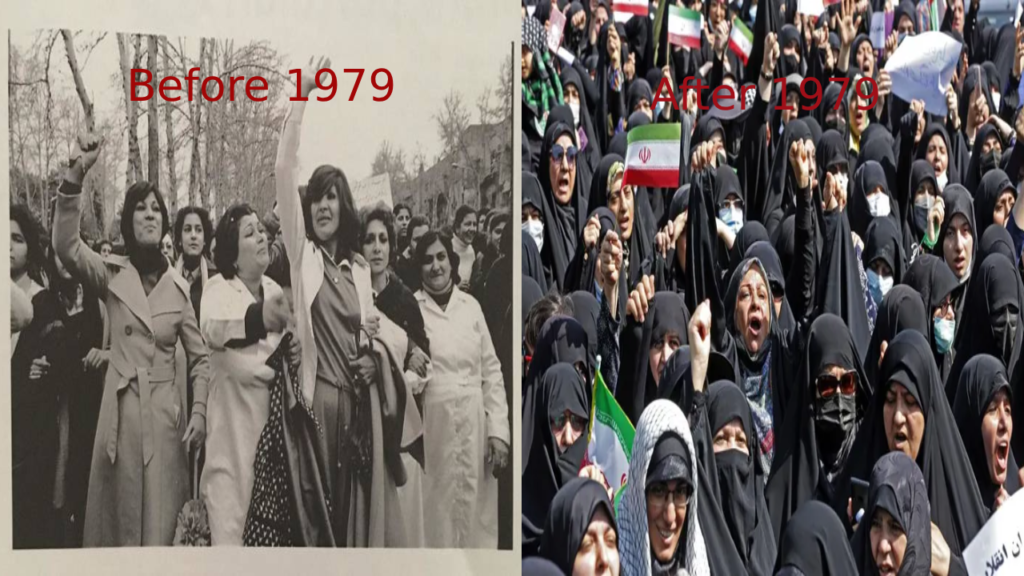
The Iranian Revolution of 1979 brought about profound changes in Iranian society, reshaping social norms, gender relations, and cultural expressions. The establishment of an Islamic Republic ushered in a new era of religious conservatism and moral policing, with strict adherence to Islamic law and values enforced by the state. While the revolution promised social justice and empowerment for the masses, its implementation often resulted in the curtailing of personal freedoms and the imposition of rigid gender roles.
One of the most significant impacts of the revolution was on women’s rights and participation in public life. While the Shah’s regime had made strides in advancing women’s education and employment opportunities, the new Islamic Republic imposed strict dress codes and restrictions on women’s behaviour in public spaces. The compulsory hijab, or Islamic headscarf, became a symbol of the revolution’s imposition of conservative Islamic values on society, with women required to adhere to modest attire and behaviour in accordance with religious norms.
The revolution also led to the rollback of many of the gains made by women under the previous regime. Legal reforms enacted by the Islamic Republic, including changes to family law and the judicial system, reinforced traditional patriarchal norms and restricted women’s autonomy in matters such as marriage, divorce, and child custody. Women were effectively relegated to subordinate roles within the family and society, with limited access to education, employment, and political participation.
In the decades since the revolution, Iranian women have continued to resist and challenge the restrictive gender norms imposed by the Islamic Republic. Despite facing systemic discrimination and oppression, women have found ways to assert their agency and push for change within the confines of the existing system. Grassroots movements, online activism, and civil society initiatives have provided platforms for women to voice their concerns, advocate for their rights, and mobilize for social change.

